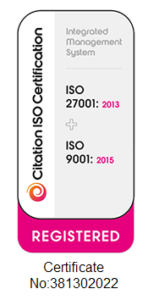Back to the Future: What to Expect for Virtual, Hybrid and In-Person Meetings
“Excellence is not an exception; it is a prevailing attitude.” – Colin Powell
When Covid-19 struck the world, events of all kinds were thrown into uncertainty.
Yet very quickly life sciences companies and medical societies found another way to connect – virtual meetings. The turnaround has been impressive and companies such as ours have adjusted quickly to a new way of connecting.
There is, of course, anticipation about meeting in person again, and no doubt when it is safe to do so, physical meetings will return in some format.
In the meantime, most meetings will continue to be virtual and if they are going to bring audiences with them, they must be engaging. Boring, dry meetings that simply try to lift content from physical meetings and present it in virtual sessions without any adaptation will lose audience members. Companies or organisations that run such meetings will find themselves without participants in future sessions.
There are clearly ways that virtual meetings can be engaging and even exciting.
Virtual meetings can use multiple strategies to build enthusiasm, for example: avatars; talking heads and experts to discuss sessions and provide personal endorsements; and using gamification, videos and music to build interest. This is what blockbuster movies do with trailers all the time: they offer audiences a taste of what’s to come and build a sense of excitement.
It’s vital that meeting organisers find ways to keep people engaged in settings where there are all too many distractions, such as answering texts or emails, web surfing, or the interruptions that now frequently occur with so many people working from home. Organisers must find ways to promote their events and build a sense of excitement and engagement, and they must find ways to make their content both valuable and interesting.
As I’ve said before, people were a lot more forgiving about things going awry in virtual events in the early days of Covid, but now there’s a far greater expectation that meetings will be professional, robust and slick. Virtual audiences have higher expectations – both for the content and for the delivery.
This is where we at Open Audience are excelling. We are experienced at keeping an in-person, virtual or hybrid audience engaged and creating opportunities for those viewing online to be part of the in-venue audience.
And we’re constantly innovating. For example, we are offering ‘Virtual Studios’ that create a“live” experience, complete with city vistas or other selected backdrops. We help clients to think through different approaches when it comes to deploying the Virtual Studio, from green screens in presenters’ homes to professional-level green screens, in the office or elsewhere, to support full-length feature presentations.
We often recommend pre-recording parts of the presentation, such as the keynote speech, which makes it easier to adapt the Virtual Studio format for a successful, slick outcome. Then with the live panel discussions, we will spend time in advance with the panel to get them comfortable with the technology and green screen setup, talk to them about physical positioning and formatting, and show them what the outcome should look like so that they know what creates a ‘good’ result.
As for physical meetings, I expect that these will return in some format, although more than likely hybrid events will be more popular in future than purely in-person meetings.
For example, virtual advisory board meetings have been embraced by many in the industry since they allow experts to meet and share their point of view without losing hours or even days in travel time. Again, of course, how they are run and how they engage participants is key to their success.
If we are going to get live meetings going again, though, we need to know we can meet safely at the venues that traditionally have held these meetings.
Partners and contacts in the industry who work closely with venues say they are working hard to adapt and prepare for a return to either in-person or hybrid meetings. What we have heard is that these venues have put in place strict social distancing and sanitisation protocols and have remodelled their spaces to adjust to a different future.
Among the strategies being adopted are partnerships with technology companies to help with a likely hybrid set up, ensuring there is a trusted virtual platform for those participants who tune in remotely while keeping logistics for in-person interactions as simple as possible.
Venues are remodelling their rooms to account for social distancing in different formats, and some are adopting more creative strategies, for example, providing broadcast studios, including green-screen studio capabilities to virtually drop in presenters and delegates – much like our Virtual Studios.
Overall, I’m optimistic about the future of the events industry. It seems to me that many organisations have responded well to very trying circumstances and that going forward, many of the key stakeholders are prepared to give audiences what they need – engaging sessions, flexibility in participation, and safe spaces.
Leslie Robertson is the Founder of Open Audience, an audience engagement consultancy that specialises in making life sciences meetings more engaging with more positive, successful outcomes – whether in-person or in the virtual space. The Open Audience team helps to strategise and prepare pre- and post-meeting as well as providing real-time support and guidance during the meeting. Open Audience also offers customisable, multilingual engagement platforms that include interactive polling, surveys, and ideas exchange.

